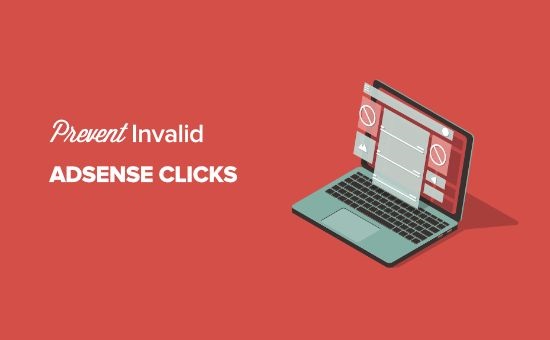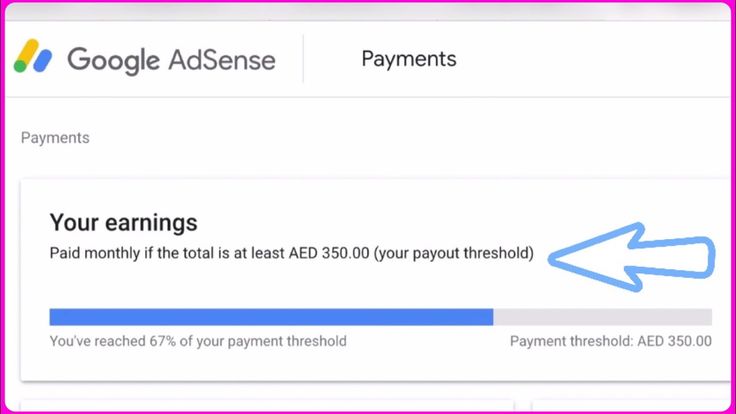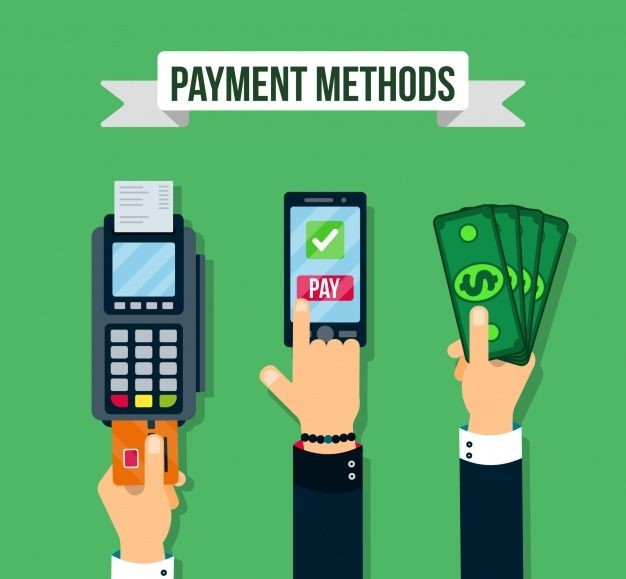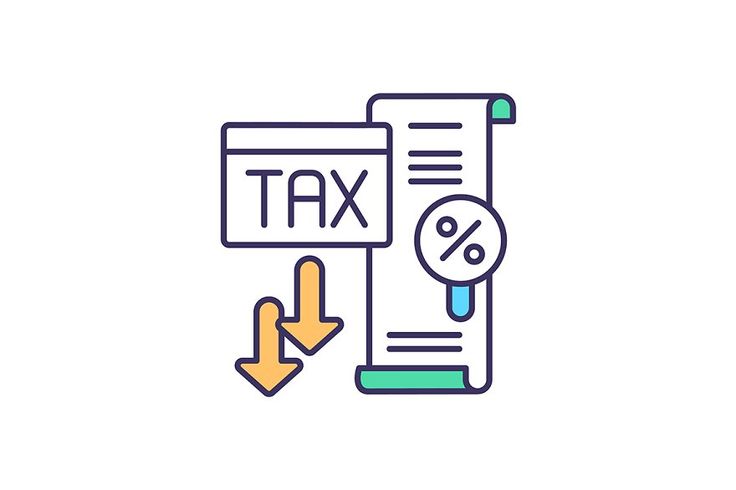Many publishers see discrepancies each month between initial AdSense earnings estimates and finalized payment totals that end up never reflecting the full activity totals. This frustrating issue of AdSense finalized earnings not updating to match dashboard estimates stems from Google’s obscure processes for identifying and deducting invalid clicks after each period closes. Yet Bigfourth’s expertise in ad network policies and advanced tracking tools can provide clarity while maximizing legitimate revenues.
Publishers relying on AdSense earnings face constant uncertainty – will this month’s estimates actually translate to finalized payments? Did invalid activity trigger an account review jeopardizing future income? When will funds from the last 60 days finally arrive?
By partnering with Bigfourth, sites can confidently expand revenues knowing the intricacies of Google policies and workflows are fully managed in their favor.
Introduction to Issue of AdSense Finalized Earnings Not Updating
Publishers using Google’s AdSense program often notice a difference between the estimated earnings shown in their account dashboard, and the finalized earnings that get reported after the month ends. This issue of AdSense finalized earnings not updating to match estimated earnings is frustrating for many website owners relying on AdSense payments.
There are a few key reasons this happens:
- Estimated Earnings
- The dashboard shows earnings estimates based on ad impressions, clicks, and other metrics during the month
- These are projected numbers that still need to be verified
- Finalized Earnings
- After the month closes, Google reviews activity and excludes any invalid clicks or impressions
- The finalized earnings total is then updated, usually lower than estimates
- Invalid Activity
- Google works to detect invalid clicks and other types of click fraud
- These are removed so only legitimate ad views and clicks are paid out
The main goal of the review process is to ensure AdSense earnings are from real website visitors, not fraudulent bot traffic or manual clicks. However, it can be worrying for publishers when their numbers drop without explanation.
Some key times in the AdSense payment schedule:
| Date | Action |
| 3rd of month | Previous month’s earnings are finalized and updated |
| 21st – 26th | Payments based on finalized totals are sent out |
So there is often a 3-4 week delay between seeing initial estimates, and getting your actual AdSense payment based on finalized earnings.
There are a few options publishers have to get more clarity:
- Check for notifications about account reviews or policy issues
- Compare estimated vs finalized figures to watch for discrepancies
- Use click fraud protection tools to fend off invalid activity
- Contact AdSense support if you have questions about specific changes
Having a good understanding of the definitions between estimated and AdSense finalized earnings not updating is important. Publisher patience is also key when awaiting AdSense payments each month. Stick to site policies, focus on quality content, and let Google manage the fine details around identifying and removing invalid traffic.
Invalid Clicks and Click Fraud Protection

Invalid clicks typically fall into two categories:
- Accidental clicks – visitors clicking repeatedly on the same ads without meaning to
- Deliberate clicks – bots, scripts, or even publishers attempting to simulate clicks for profit
Neither of these provide value to advertisers, so Google screens them out. The tricky part is that invalid clicks often get mixed together with real user traffic in the initial estimated earnings. Google needs time after each month ends to analyze activity logs and identify fakes.
Some common signs of invalid clicks:
- Repeated clicks on an ad in a short time period
- Clicks with odd geographic distribution or traffic sources
- Clicks that don’t end in landing page views for advertisers
Publishers will simply see their numbers drop when the finalized earnings get reported. The best defense is having preventative tools in place, known collectively as click fraud protection.
Click Fraud Protection Methods
There are a few key ways publishers can proactively fight invalid clicks:
- Limit click ability – disable holding down ads to repeatedly click
- Block known bots – use services that maintain IP blacklists
- Monitor analytics – review visitor stats for irregularities
- Remove incentives – don’t encourage manual clicks from visitors
- Use protective plugins – tools like Advanced Ads Pro help identify issues
Advanced click fraud protection can scan daily analytics and traffic logs to spot patterns of invalid clicks early on. Publishers get alerts to threats against their AdSense accounts before payments are impacted.
Having protections in place and responding to alerts can greatly reduce the chance of swings between AdSense estimated and finalized earnings. Cleaner traffic and clicks will translate to smoother payments.
In some cases, Google discovers serious policy violations generating truly fraudulent clicks. This can trigger account reviews and lead to account suspension if found to be purposeful manipulation.
Hence the importance of staying informed on the differences between valid user clicks and invalid clicks, and employing preventative protections.
Payment Thresholds

Before publishers can withdraw their earnings, Google AdSense requires them to meet a minimum payment threshold. This threshold differs by currency, but is generally around $100 USD.
This means publishers need to accrue earnings past $100 before payment will be sent out. Even if estimates during a month show higher earnings, the AdSense finalized earnings not updating must still clear the basic threshold after invalid activity is removed.
Why Payment Thresholds Matter
AdSense payment thresholds serve a few key purposes:
- Ensure publishers are serious about managing their sites
- Weed out test accounts or non-impactful levels of earnings
- Reduce admin costs of paying tiny amounts each month
- Motivate publishers to keep optimizing content and traffic
The threshold is essentially Google’s way of making the program cost-effective to run. Processing large volumes of micro-payments to publishers would be admin-heavy. Requiring a $100 minimum helps streamline the payout process.
Some examples of common AdSense payment thresholds:
| Currency | Payment Threshold |
| USD | $100 |
| EUR | €70 |
| GBP | £60 |
| INR | ₹7000 |
These minimums generally aren’t too difficult to reach for established publishers. Those just getting started can use the threshold as a goal to work towards with site improvements.
Clearing Payment Minimums
For those struggling to consistently clear thresholds, there are a few key steps to take:
- Analyze site traffic to boost volume
- Optimize ads through placement and formats
- Assess content to identify high-performing topics and pages
- Prevent invalid activity to avoid earning rollbacks
- Check payment history to predict monthly outcomes
Maintaining the motivation to keep producing quality content that attracts visitors is also crucial. Over time, the threshold won’t feel strict as monthly earnings from AdSense climb reliably past the minimum amount.
Meeting the payment threshold serves as proof of a site’s profit potential to publishers. And overcoming that initial earnings goal opens the door to receiving regular payouts from Google for all future work.
Payment Timelines

Understanding the specifics of the AdSense payment timeline can help provide clarity for publishers watching their earnings journey from estimates to AdSense finalized earnings not updatings in their account. There is often a lag of a few weeks involved between the actions on a publisher’s site generating impressions and clicks, and money hitting their bank account.
Here are the key dates to be aware of:
| Date | Payment Stage |
| 1st of Month | Publisher activity for previous month is still accumulating in estimates |
| 3rd of Month | Finalized earnings are calculated after invalid clicks removed |
| 21st – 26th | Actual AdSense payments are sent to publishers |
So on the 1st, publishers might review their dashboards and see impressive earnings for the month that just ended. But this can be misleading, as it doesn’t account for potential invalid activity.
Google then takes a couple weeks to analyze data and filter out bad clicks or impressions.
This is when publishers may notice their earnings for the previous month decrease as the finalized totals replace initial estimates. By the 3rd all revisions are complete.
Finally, about 3 weeks later, the AdSense payment process is triggered and funds start flowing to publishers’ accounts or check mailboxes.
Payment Timeline Takeaways
Being aware of this workflow can help publishers set proper expectations month to month and understand why numbers might shift between initial and final values.
Some key lessons:
- Don’t get over-excited by full-month estimates
- Expect a dip from estimates to finalized amounts
- Know that payment delays are procedural, not punitive
- Keep providing quality content to fans
Becoming familiar with the predictable lag between on-site activity and eventual AdSense payout makes the interim stage less concerning. Just focus on upholding site integrity and let Google manage payment details behind the scenes.
Payment Methods

Once publishers clear the AdSense payment threshold each month, they face an important choice on how they want to receive their earnings. Google provides several withdrawal and delivery methods to fit different budgets and locations.
Choosing the right payout method involves weighing factors like:
- Withdrawal minimums – some options have higher thresholds
- Processing time – can vary from days to months
- Access restrictions – depending on country or currency
- Admin requirements – tax info or bank account validation
Here is an overview of some top AdSense payment methods and key considerations:
| Method | Summary | Things to Know |
| Electronic Funds Transfer (EFT) | Bank account transfer | Usually fastest option with less restrictions |
| Check | Mailed paper check | Can take weeks to receive and clear |
| Wire Transfer | International bank payment | High fees, may require SWIFT codes |
| WebMoney | Virtual wallet | Popular in Eastern European markets |
| Payoneer | Prepaid debit card account | Useful for publishers in many countries |
Where possible, EFT tends to be the quickest and lowest-hassle payout method. In countries where EFT isn’t well supported or bank accounts are difficult to set up, alternatives like Payoneer show promise.
The delivery speed or cost of a given payment method won’t impact the actual AdSense finalized earnings not updating sent out – just determine how quickly funds become usable once the payment timeline triggers.
So it’s wise to research all options thoroughly first when establishing an AdSense account, not just default to checks which can encounter delays. Publisher circumstances and locations play a big role.
Pro tip:
Once a payout method is chosen, payments must meet a higher threshold before allowing publishers to switch. So pick carefully up front for more flexibility long term.
Payment Issues

Even publishers who have successfully cleared the AdSense payment threshold and established their withdrawal method sometimes run into problems getting paid properly.
Google relies on automated systems and algorithms to manage verifying activity and releasing payments each month. Sometimes these checks trigger payment holds which delay payouts or require publisher action to resolve.
Common payment issues include:
- Unverified tax information
- Publishers must submit tax details that match and validate their identity
- Pending address confirmation
- Physical address must tie back to account owner via PIN mail
- Unselected payment method
- Failing to choose a payment type blocks payments
- Policy violations
- Breaching AdSense rules can trigger compliance holds
- Unfinished account reviews
- Checks for invalid traffic may restrict payments
- Scheduled payment holds
- Manual holds postponing payouts
The first three relate to incomplete setup steps. The main reasons more established accounts suddenly stop receiving consistent AdSense payments involve policy issues, traffic reviews for invalid clicks, or self-imposed delays.
Resolving Payment Holds
Fixing blocked payments comes down to identifying the specific cause in the publisher’s dashboard and addressing it.
- Supplying missing personal, tax or address information
- Choosing valid payment type if absent
- Appealing policy violation cited
- Waiting for traffic reviews to finalize
- Removing manual payment hold
Confirming these details are satisfied allows the AdSense payment workflow to resume on its regular monthly schedule. Keeping publisher accounts and sites complaint is key to avoiding recurring issues.
Restoring payments may take some time after resolving the underlying causes. But identifying and quickly acting on any configured payment holds gets publishers paid sooner. Just remain patient as Google systems process the changes on their side – focus on creating quality content.
Account Reviews
One of the more serious and troubling reasons publishers encounter AdSense payment problems or blocks is failing account reviews. Google constantly monitors activity across sites showing its ads to catch policy violations or invalid traffic patterns. Publishers determined to be in breach may undergo account reviews before further payments can resume.
Google keeps its criteria and detection methods private. But in general, suspect behaviors include:
- Having excessive overall clicks or impressions vs site size or traffic
- Displaying ads adjacent to inappropriate content types
- Failing to identify advertiser landing pages as affiliated
- Showing pop-ups, auto-redirects or other intrusive ad placements
- Generating clicks without corresponding visitor analytics
- Encouraging visitors to click ads through incentives
Rather than solely relying on automated filters, Google staff will manually vet sites being reviewed for clear evidence backing up automated flags.
Account Review Outcomes
There are a few potential results from AdSense account investigations:
- Policy warning – publisher required to make minor fixes quickly
- Temporary payment hold – payouts resume after issues fully resolved
- Account suspension – serious or repeat offenders get banned
Publishers under review will see compliance holds reflected in their payment status. They may also get direct emails outlining problems observed by Google’s team.
Resolving AdSense finalized earnings not updating involves demonstrating full understanding of policies violated plus exactly how they were addressed, preventing future issues. Quick action is key – delays can lead to lengthier or permanent blocks.
If accounts remain in good standing without repeat offenses, payment abilities typically get re-enabled over time. But continued reviews result in lost earnings potential.
Maintaining rigorous site and traffic quality helps avoid most compliance violations resulting in blocked AdSense payments.
Support Requests

Here are scenarios where support requests may offer clarity:
- Sudden drop in AdSense finalized earnings not updating without cause
- Payments blocked by vague compliance violation
- Unable to verify tax information accurately
- Struggling to reach payment threshold each month
- Payments sentiment but not received after months
Troubleshooting account problems independently has limits. After exhausting personal diagnosis, reaching out to Google support should help uncover what’s interrupting smooth payment delivery.
Effective Support Requests
To increase the chances of useful responses from AdSense’s support reps, publishers should:
- Describe issues clearly and concisely – what exactly is failing or confusing?
- Note steps taken so far to uncover or fix problems
- Document relevant account specifics like recent changes or traffic
- Ask specific questions only support can reliably address
Including screenshots of earnings reports or policy violation notices also helps AdSense agents grasp what’s happening faster.
Make sure to access Google support directly from the Help menu – third party services cannot directly resolve AdSense issues.
Support Process Expectations
Due to the large AdSense publisher base, support queues can build up. Responses may take 2-5 days via email. Concerns about delayed payments lasting over 60 days can warrant following up if initial requests get no reply after a full week.
Once support engineers can replicate errors described, they should provide guidance to get accounts back on track. This may entail further reviews pending their side before payments resume. So publishers must continue being patient.
With properly detailed support requests, most common AdSense account and payment problems become resolvable over time.
Increasing Earnings
The most direct way publishers can scale their AdSense payments over time is by boosting overall site traffic and engagement. More visitors and ad impressions that convert to clicks will lead to higher earnings. But there are also nuances in how sites display and integrate AdSense ads that impact performance.
Website Optimization Tips
Here are key areas to focus on to maximize AdSense returns:
- Page speed – fast loading sites get more sustained visitors
- Mobile optimization – ensure responsive cross-device experience
- User experience – intuitive navigation and branding keeps visitors longer
- Ad placement – test different slots to find most visible real estate
- Ad formats – rotate display ads, native ads and adaptive types
Tightening up these website fundamentals reduces bounce rates while putting ads in front of more eyes.
Advanced Tools and Customization
For publishers running WordPress sites, plugins like Advanced Ads provide robust AdSense implementation and optimization. Features like:
- Automated ad injection tools
- Batch ad code manager
- Click fraud protection
- Geo-targeting of ads
- Ad blocker circumvention
- Ad layout customization
These advanced capabilities maximize impressions served and clicks achieved based on more granular site traffic analysis.
The combination of an engaging overall web presence and optimized AdSense configurations gives publishers the best ability to scale their earnings over time. This in turn leads to consistently achieving the payment threshold each period.
Focusing on quality content while understanding smart technical integrations for AdSense is key for publishers seeking to boost their income long-term.
Payment Tracking
![]()
Publishers going through the cycle of generating impressions and clicks before eventually receiving their AdSense payments often want clearer visibility into what stage earnings are at. Rather than just waiting for funds to hopefully arrive in their account one day, tracking tools help confirm each step is processing on time.
Here are ways publishers can monitor payments:
- Review account Home panel for latest reporting period
- Verify estimated vs AdSense finalized earnings not updating on Transactions tab
- Check for notifications or policy warning symbols
- Enable email alerts for payment confirmations
- Document previous monthly timelines
- Watch bank accounts for deposits
Google does not offer specific payment tracking or processing updates. So publishers must find other methods to follow along with each monthly cycle’s progression:
- Initial month closes with estimated figures
- Estimates get converted into finalized earnings
- Final earnings trigger actual AdSense payment
- Withdrawal gets logged against appropriate account
Verifying Payment Arrival
Even after seeing the payment issue in their account dashboard, publishers should check wherever funds get sent to confirm the transfer completes fully.
- Check bank ledgers for deposit records
- Review PayPal or Payoneer application for payment receipts
- Log into e-wallets to check balances
- Contact support if no payment trail found after 60 days
Staying on top of each monthly workflow from impressions to verified payment receipt gives publishers peace of mind about their AdSense income stream. Relying on Google to accurately process earnings in a black box approach leads to less clarity.
Taxes on Earnings

With publishers in almost every country around the world now using Google AdSense, figuring out tax implications creates plenty of confusion. For sites generating small, passive side income, tax rules remain unclear and enforcement lacks consistency. Yet AdSense payments absolutely count as taxable income, so obligations still exist.
Here’s how taxes generally work with AdSense:
- All earnings are viewed as taxable income
- Tax rates depend on revenue scale, location, and status
- Responsibility falls to publishers to voluntarily report and pay taxes owed
- Google does not withhold taxes before issuing AdSense payments
- State or country laws may require tax document filings related to AdSense finalized earnings
Hence publishers face annual tax reporting to stay compliant – but approaches vary significantly.
Reporting Tips
In terms of proving AdSense income for years when taxes get filed, publishers should:
- Retain monthly payment summary emails from Google
- Maintain thorough payment ledgers and withdrawal confirmations
- Download detailed account reports frequently as records
- Research local income tax structures related to side revenue
Some countries have higher thresholds before reporting obligations kick in for individual bloggers or site owners. But when AdSense income scales to a professional-level enterprise, formal filings become essential.
Expense Deductions
One way publishers can reduce tax burdens is taking advantage of applicable expense deductions:
- Website hosting fees
- Content production costs
- Home office deductions
- Professional tax services
Tracking these costs against AdSense revenue helps offset tax liability each year.
So while Google itself avoids getting involved in direct tax guidance or collection, publishers do share responsibility for properly handling tax implications from earnings. Keeping diligent records and staying up on local tax code nuances makes managing this easier.
Conclusion and Next Steps
By now publishers should have a detailed grasp of the numerous moving pieces influencing AdSense payments cycles and common issues that arise impacting AdSense finalized earnings not updating and delivery.
Getting started requires providing complete tax and identity validation along with choosing a payment method. From there, the core monthly workflow involves:
- Generating site impressions leading to ad clicks
- Waiting for the next month’s finalized earnings report after invalid clicks removed
- Reaching the payment threshold to trigger actual payout
- Receiving funds based on the delivery speed of chosen payment type
There are many factors that can interrupt smooth earnings flow including:
- Sudden changes in visitor traffic or landing page quality
- Failure to maintain full policy compliance
- Unreliable website hosting uptime or speed
- Invalid clicks skewing initial estimates
- Processing snags creating blocked payments
- Tax obligations eating into net income
Yet by understanding the complete picture of how AdSense systems operate, publishers can anticipate potential issues and react promptly to troubleshoot using supporting resources.
The endpoints guiding ongoing success include:
- Produce content readers consistently engage with
- Monitor site analytics for shifts signaling problems
- Use protective tools to avoid policy violations
- Consult account dashboards to track revenue cadence
- Research factors optimizing income in your topic niche and region
Staying abreast of emerging practices while letting Google efficiently tally monthly finalized earnings and dispense payments keeps publisher efforts centered on what matters – serving visitors.
Adhering to all prescribed protocols around content and ads enables thriving account status over the long-haul. Keep asking the right questions, apply fixes promptly when issues arise, and your dedication to creating a topical internet home for readers gets rewarded.
Website Services and Our Mission
Bigfourth’s hands-on methodology and automation tools have maximized millions in AdSense revenues for publishers worldwide. Services proactively pave the way for growth by:
- Auditing site designs, content, and analytics for revenue optimization
- Crafting high-performing ad layouts matching site aesthetics
- Utilizing advanced click fraud monitoring to safeguard accounts
- Providing timely alerts to policy violations or traffic changes
- Submitting appeals and documentation to resolve flagged issues
- Streamlining tax documentation for simplified filing
- Tracking monthly payment processing to ensure timely arrival
Plus dedicated account management translating raw site analytics into actionable insights for better engaging high-value visitor segments.
Rather than reactively troubleshooting problems as earnings fluctuate or AdSense finalized earnings not updating, Bigfourth pursues consistency through prevention and automation. Publishers gain an ally intimately monitoring accounts to address risks immediately, grant peace of mind.
Stop struggling to decode AdSense documentation or hoping your limited efforts suffice. Bigfourth’s tailored packages combine specialized expertise with software efficiency – the proven formula for expanding AdSense income without headaches. Join other publishers already hitting goals by focusing purely on content creation while optimization happen automatically behind the scenes.
Contact Bigfourth LTD
Website: https://bigfourth.com/
Email: [email protected]
Fanpage: https://www.facebook.com/bigfourth/
Linkedin: https://www.linkedin.com/in/bigfourth/
